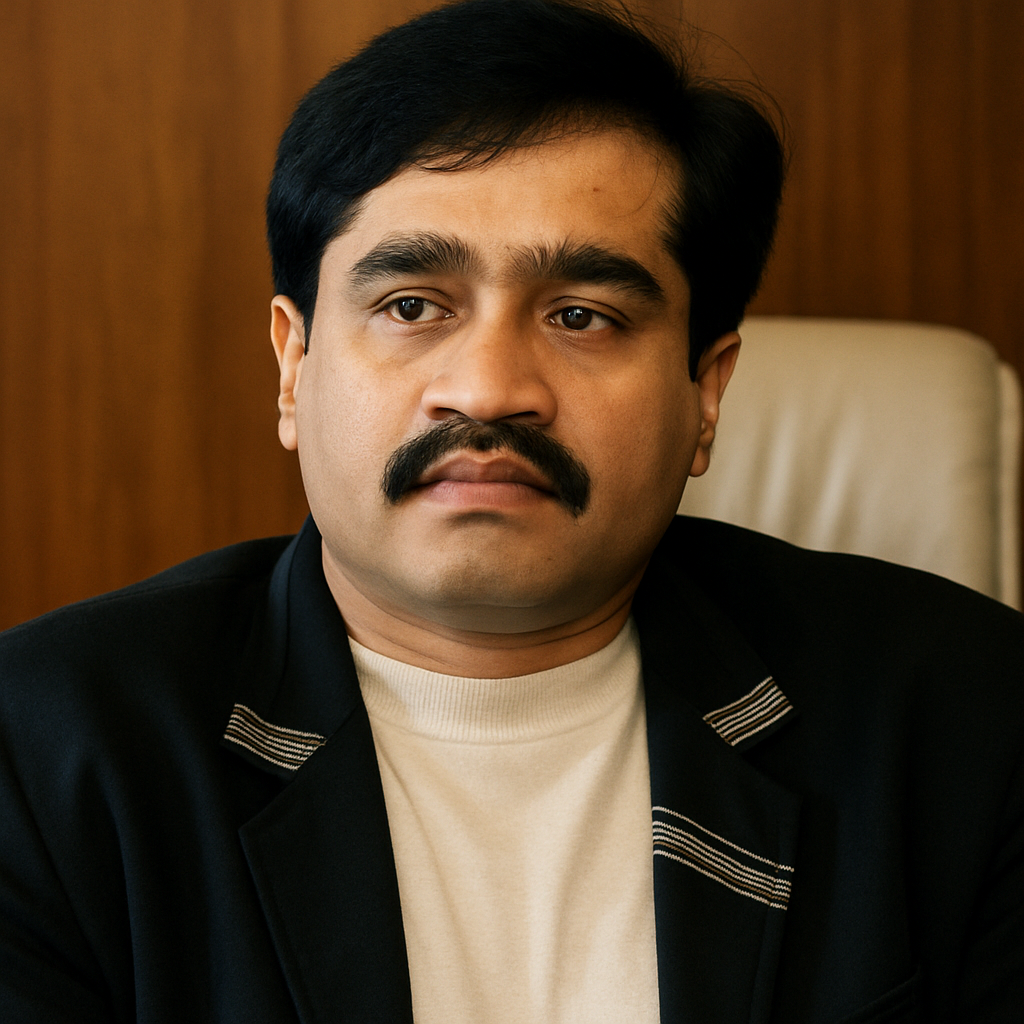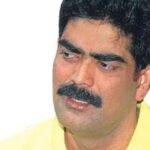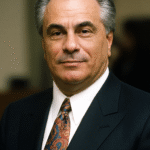By the time you hear his name, you already know you’re stepping into a dark alley of crime, mystery, politics, betrayal—and power.
Introduction: The Ghost Who Still Breathes
There are names that echo for generations. Not because of their heroism. Not because of their kindness. But because of the fear they instilled, the chaos they left behind, and the silence they enforced in every room their name was spoken. Dawood Ibrahim is one of those names.
In the murky waters of India’s underworld, Dawood’s name swims like a shark—sometimes visible, mostly hidden, always dangerous. He isn’t just a gangster. He isn’t just a terrorist. He isn’t just a smuggler. He is a saga—a story that stretches over decades, borders, ideologies, and bloodlines.
But who is Dawood, really? How did a boy from Dongri rise to become India’s most wanted criminal and a global underworld icon? Let’s trace the life of a man who vanished from plain sight but never from public memory.
Humble Beginnings: Born in the Heart of Mumbai’s Chaos
Dawood Ibrahim Kaskar was born on December 27, 1955, in Dongri, a cramped and chaotic neighborhood in Mumbai. He was the son of Ibrahim Kaskar, a police constable, and Amina Bi, a strict homemaker. Ironically, Dawood’s life began under the roof of law enforcement, but it took a sharp turn towards rebellion.
Growing up in the underbelly of Mumbai exposed Dawood to a world where crime wasn’t an exception—it was survival. Poverty, crowded chawls, fights in alleys, and the constant noise of desperation formed the background score of his youth. But Dawood was different. He wasn’t just a street-smart boy. He was calculated, patient, and dangerously ambitious.
He didn’t want to escape poverty. He wanted to own the city that mocked him.
The Making of a Don: D-Company is Born
In the 1970s, Dawood, along with his brother Shabir Ibrahim, started making small waves in Mumbai’s smuggling circuits. At a time when gold smuggling and contraband were thriving, the Ibrahim brothers became known for their ruthlessness and reliability. They knew when to use the gun—and when to use the smile.
They were fearless. And that fearlessness got the attention of Haji Mastan and Karim Lala—the underworld kings of that era. But Dawood wasn’t interested in being someone’s pawn. He had his eyes on the throne.
After Shabir was killed in a gang war, Dawood took over the reins. In grief, he became colder. More dangerous. D-Company, short for “Dawood Company,” was officially born—a syndicate that would later become one of the most powerful organized crime networks in the world.
Ruling the Underworld: Blood, Money, and Power
By the mid-1980s, Dawood had already expanded his reach across Dubai, Karachi, and Southeast Asia. He was no longer just a gangster. He was a kingpin, managing billions through extortion, drug trafficking, contract killings, real estate, and Bollywood financing.
Yes—Bollywood.
Dawood wasn’t just a criminal; he was a celebrity criminal. Rumors about his connections with actors, directors, and film producers ran rampant. It was the time when money talked, and his money spoke in every glittering party and film set in Mumbai.
But with fame comes scrutiny. And Dawood wasn’t someone who liked the spotlight—unless he was controlling it.
1993 Mumbai Blasts: The Day Everything Changed
On March 12, 1993, 13 bomb explosions ripped through Mumbai, killing over 250 people and injuring hundreds. It was the deadliest terrorist attack India had seen at the time.
And the name that emerged from the ashes? Dawood Ibrahim.
The Indian government accused him of orchestrating the blasts in retaliation for the 1992 Babri Masjid demolition and the resulting communal riots. Dawood, once seen as a Robin Hood figure in some circles, became India’s Enemy No. 1 overnight.
The underworld was no longer about smuggling gold or settling gang rivalries. It had merged with terrorism. Dawood had crossed a line that could never be uncrossed.
A Fugitive in Plain Sight: Life in Exile
Soon after the blasts, Dawood vanished.
Not into the forests. Not into some secret den. But into Karachi, Pakistan—allegedly under the protection of the Pakistani government. India submitted multiple dossiers. International agencies issued red corner notices. His properties were seized. His close aides arrested. His name was blacklisted.
But Dawood? He lived on. According to various intelligence reports, he lived in Clifton, Karachi, under heavy protection. Some reports even claimed he was involved in Pakistani intelligence operations, working as a strategic asset.
For a man wanted by the world, he remained curiously untouchable.
The Global Don: From India to the World
Over time, Dawood’s empire became less about street-level crime and more about global syndication. He built connections with terror groups like Lashkar-e-Taiba and Al-Qaeda. His network reportedly funded cross-border terrorism, fake currency distribution, drug trade, and arms trafficking.
The United States designated him a “Global Terrorist” under Executive Order 13224. The United Nations also sanctioned him. His face became a symbol of everything that went wrong with international crime and terrorism.
And yet—no arrest. No trial. Just whispers.
Family Ties: Blood Runs Deep
For all his crimes, Dawood never let go of family. His siblings were scattered across the world, but many were reportedly still involved in his operations. His daughter married Pakistani cricketer Javed Miandad’s son, a union that made headlines across the subcontinent. It wasn’t just a marriage; it was a political statement.
Dawood’s name kept surfacing in connection with property disputes, extortion cases, and even IPL match-fixing. But he remained as elusive as ever.
Even as many of his close aides surrendered, died, or turned state witnesses—Dawood remained the last man standing.
Legacy of Fear: The Man, The Myth, The Monster
He’s not just a fugitive. He is a symbol—of everything that went wrong with governance, border security, crime, and justice. Children born long after he disappeared still know his name. Movies continue to portray him. Songs have mentioned him. TV debates have dissected him. Yet the real man remains invisible.
Is he sick now? Some reports say he has cancer. Others say he had a stroke. Is he still in Karachi? Or did he escape to the Middle East? Or Africa?
No one knows for sure.
And that’s exactly how he planned it.
The Psychology of Dawood: Not Just a Criminal
What sets Dawood apart from other criminals is his understanding of power. He wasn’t the strongest, nor the most brutal, but he was a master manipulator. He understood fear, loyalty, silence—and how to balance them like a puppeteer.
He turned crime into an art form, blending street smarts with international strategy. He didn’t just want to escape poverty; he wanted to rewrite the rules of the game.
And he did.
The Political Angle: Convenient Silence
It’s no secret that political silence has helped Dawood thrive. Governments have used his name to incite public emotions, especially during elections. Some political parties allegedly had connections with him for funding. Others used his name to stoke fear and nationalism.
In many ways, Dawood became a tool—used by both the system and its enemies.
But what happens when the system enables the very monster it wants to destroy?
Pop Culture and Dawood: The Don of Bollywood Too
You can’t separate Dawood Ibrahim from Bollywood. His life has inspired numerous films: Company, Shootout at Lokhandwala, D-Day, Once Upon a Time in Mumbaai—to name a few. Each film painted a different shade of Dawood: the gangster, the don, the betrayer, the king.
But no portrayal could fully capture his reality. Because reality, when it comes to Dawood, is stranger—and darker—than fiction.
Where is Dawood Now?
The million-dollar question.
He’s been “near death” a dozen times, if reports are to be believed. He’s also been spotted in restaurants, at weddings, and on private islands—again, according to unverified sources. But the truth is, no one knows.
He’s a ghost. A myth. A scar.
And perhaps, he likes it that way.
Conclusion:
Dawood Ibrahim’s story is not just about crime. It’s about a boy who wanted power so badly that he burned bridges, cities, and lives to get it. It’s a story of how a man can become so powerful, so feared, that the world can’t touch him—even when it tries.
But in the end, every story has an ending. Maybe not today. Maybe not tomorrow. But someday, even the most untouchable man will meet justice.
Until then, his name will echo in the alleys of Dongri, in the corridors of power, in the files of intelligence agencies, and in the nightmares of those who dared to cross him.



